
The Modern Butlers’ Journal volume 8, issue 10
International Institute of Modern Butlers
 Message from the Chairman
Message from the Chairman
Some articles in the media about butlers prompt a few comments below; rather a busy month of training around the world; an excellent Domestic Estate Managers Association conference in Los Angeles; and the continuing series on cigars, wines, and the world of the PA. Enjoy!
Butlers in the Media
Interesting article from the BBC, Servants: A Life below Stairs, which is fascinating, no doubt, to Europeans and Americans, and anywhere else where Downton Abbey is proving popular; but as I discovered when in Thailand just now, the article resonates as a world apart, a piece of arcane history, really, for most others elsewhere. What led to this epiphany? The fact that a teacher at a respectable university was busy teaching hospitality students that butlers were a creation of the hotel industry, with no idea of the existence of butlers in private service for a thousand years before their recent appearance in hotels.
Just as man has long considered himself the center of the universe, anthropocentric, so Europeans have become overly fond of, or perhaps complacent in, the rectitude of our cause, forgetting that there are other players on the stage. Take, for instance, a Western colleague sending a letter to the editor as follows (in response to the use of “The Queen of England” in the last MBJ): “Interesting newsletter as always. One article refers to ‘the Queen of England’ and while we all know to whom you are referring, that is not her correct title. It is ‘Her Majesty Queen Elizabeth II of the United Kingdom of Great Britain and Northern Ireland,’ which would be verbose in the context of your article. But if you simply said ‘the Queen,’ everyone would know who you were talking about!”
The response sent back, which the reader conceded was correct in principle, was: “I was of the same opinion until, sitting in Thailand, I deliberately added ‘of England’ because, in our Anglo-centric way, we forget that many other countries have queens, including Thailand!” He did, quite rightly, however, point out “When you say ‘Queen of England,’ it upsets the rest of Great Britain, as though they were second class citizens. I doubt the Irish care.”
The point? We can say that the English butler stands as the standard for all things butlerish, but the idea that anything anyone else offers on the subject of superior service, by definition, must not be quite up to standard is just to promote a stereotype that my be quaint in its ineluctable (unable to be resisted) certainty, but which actually falls short of the ideals of any butler for whom the profession is a lifelong learning experience. I say this having experienced a level of open-hearted, solicitous, and caring service in Taiwan and Thailand which, married with the many admirable traits of a butler, would have no doubt found much support from employers of butlers in centuries passed. In other words, the essential trait of dignity can be manifested quite adequately with humility—it does not require that haughty attitude, whether spoken or unspoken, that has so embedded itself in the butler psyche, and the English in general, over the centuries. There are certainly many ways in which the butler provides superior service that are well conceived, but are employers really well served by an attitude or mindset that is fixed in its innate superiority, as opposed to enjoying the flexibility that comes from sharp observation, intelligent evaluation, and skilled implementation of new ideas?
***
Another interesting article with the requisite salacious title to attract readers—“What the butler saw naked in the bath”—provides another look at butlers a century ago. The butler saw his boss in the bath who expected him to brush his hair. “As far as he was concerned, [the butler] didn’t really exist. He was just an automaton, someone whose only purpose in life was to serve.” When the butler began his lifelong career in 1914, he “worked 16-hour days emptying chamber pots, shining shoes, and doing anything he was told to do. He and his fellow hall-boys had half a day off a year at Christmas, slept in either cupboards or cellars and changed their clothes—on average—once a month.” The job was grueling and demeaning resulting in resentment towards employers. Butlers and household staff are not treated that way in most countries today, but there are still some countries where they are. No system of servitude will ever work, because the resentment it generates results in the worst level of slavery and the degradation of the perpetrators as much as the victims. Thank goodness most service is based largely on mutual support and benefit.
***
USA Today’s article 10 amazing free hotel amenities lists the infamous Tanning Butler at Ritz Carlton Miami Beach and the Book Butler at a hotel in Minneapolis in the top ten… really?
***
Congratulations to Larry Mogelonsky for his recent article. It is not often one hears someone outside the butler profession stating what is obvious to us, but still new news to hospitality in general: that the butler is such a simple solution to differentiating a luxury hotel, or at least greatly increasing the avenues open to pampering and wow’ing guests. And a logical extension of butler service in a private estates to the hotels the same employers may well frequent when traveling.
And Mr. Mogelonsky was spot-on in stating that guests need to be educated in how to utilize their butlers, and the scope of their offerings. Mr. Mogelonsky provided some examples of services he had received from butlers, but there are far more ways that butlers can be utilized. The variance in perception is caused by the training they receive failing to pass on the full range of services that butlers can provide, resulting in butler service in too many hotels being too narrow in scope. The Institute’s hotel butler rating service lists some of the services available, and the extent of the butler service that can be experienced in different hotels.
A couple of points that are not totally accurate in Mr. Mogelonsky’s otherwise excellent article, is that “the decision to initiate a butler program should be tempered by the availability of appropriate staff as properly trained butlers are both expensive and rare,” and the suggestion that the concierge staff could be made into butlers. Staff from whatever department, preferably with F&B background, who have a service orientation and a modicum of intelligence, simply need to be trained as butlers by a trainer knowledgeable in the services that can be offered, as well as the proper mindset and communication skills. This does not cost much at all when measured against the higher ADRs that Mr. Mogelonsky accurately states to result in butler service suites/villas. Anyway, kudos to Mr. Mogelonsky for his support of this rather recent arrival on the hospitality scene: the butler.
***Another article from England’s Telegraph about hotel butlers, as well as private service butlers, in England/Scotland, which is quite accurate and contains some interesting information.
The Hollywood Reporter reports the price tag to maintain (and fly) the most expensive private jets, such as the Bombardier Global Express, is $3 million a year, with fuel costs alone in the $3,000-US-an-hour range. Sales of the largest business jets have increased 23% over the last five years with Bombardier, Gulfstream, and converted Boeing commercial jets leading the way. One broker in Los Angeles correctly asserts that owners of such planes would need to have a net worth of at least $100 million.
The Art of Being a Personal Assistant
Organizing a Principal’s Life
In a first conversation with the principal, a prudent gesture on your part, if possible, would be to ask them to speak openly and freely about the negatives in their life. Encourage them tell you everything that is wrong, that they don’t like or are angry about. Doing so will create an invaluable directive for you on how to proceed and frees them up, giving them a feeling you can take everything that is wrong, bad, or simply not a preference, and turn it around to an efficient and effective system. It suggests you are a proactive problem solver. They might just say to you «That’s your job, figure it out,» in which case, be aggressive in dissecting everything as much as possible. If something is working well and you objectively think it is for the best, then keep it the way it is, rather than making changes just so you can show change. Be subtle, don’t report or discuss the changes openly with the principal unless they asked to be informed. Keep a daily journal and write everything you do as you go along.
Listen, listen, and listen, not only with your ears and eyes, but with every part of your emotional and social intelligence. Very often what is not said by the principal, intentionally or not, is what you need to be attentive to, just as much as you attend to what they are saying.
Be flexible, spontaneous, and adaptable. Be vigilantly critical of your own work and behavior at all times. Your physical presence, regardless of height and weight, is very important. Being silent and not talking is easy. Making your body still is one thing, but to make your entire presence silent when they are talking to you, or when sitting with them while they are reading something, is a fundamental part of being a Personal Assistant.
Create a manual for your job that includes philosophy, not just practical points. It is your responsibility to the principal, as well as for your successors, to be transparent, creating systems and procedures that will allow another person to step into your shoes and know how to proceed.
Placement
Ms. Teresa Leigh and others at the DEMA conference in Los Angeles spoke about the derailing of private service staff by Single Family Offices and Multiple Family Offices: basically corporate and finance offices being tasked with the placement of the household staff while having no background or real understanding, on the whole, of household management—and how this has been leading to unrealistic expectations of duties and downward pressure on salaries of private service staff, in the mistaken idea that household salaries and culture should mirror corporate salaries and culture. In addition, the market is being diluted and pressured by employers conceiving that household staff should be willing to accept steep cuts in remuneration on the basis that many are out of work and candidates should be happy they have a job offer; and employers looking to non-professional household staff for their staffing needs.
This is more than a pendulum swing away from the high flying days of the 1990s and early 2000s when salaries were quite exuberant and the household industry flying high. A corporate culture is inserting itself into the household culture, whereas what works in an office is not what works in the home. It is up to the profession as a whole to redefine and reassert the domestic culture and how it is best run by itself, not by a corporation, if we are to provide a home for our principals.
Recent Graduates



Cigars, Part VIII
Handling Cigars
A few tips about handling cigars before we talk storage. Cigars are a natural product and it is necessary to take care when transporting and handling them. Take even greater care when the cigars belong to your employer or, should you be working in a hotel, be offered for sale to your customers. Cigars are damaged relatively easily and should be handled as little as possible. Oils from our fingertips can be absorbed into the tobacco leaf. Wash your hands before handling cigars and avoid strongly scented soaps or hand lotions. Try to handle cigars by their bands if they have them or use cotton gloves. Avoid washing your gloves with strongly scented detergents or rinse aids which may also taint the tobacco.
Selecting a Humidor
All cigars need to be kept in a humidor. Even bulk boxes should be transported and stored in this manner. I once knew a GM who ruined several unopened boxes of Cuban cigars by insisting that they were safer locked away in his air-conditioned office. An unopened cigar box is not airtight – it is not a humidor. If your humidor cannot accommodate large boxes, you will have to buy cigars in smaller quantities or even individually. Keep this in mind when deciding what size humidor to buy. Buying an overly large humidor is also not recommended as it becomes difficult to regulate humidors that are less than half full.
One alternative is to line a camping cooler with untreated Spanish cedar and convert it into a bulk storage or transport humidor. By all accounts they work very well, but should preferably remain out of sight.
Humidors come in many sizes, ranging from the small, single-layer desktop humidor, to the large free-standing chest of drawers type. The most expensive humidor is not necessarily the best humidor. Cigar publications often run comparative reviews and these can make interesting reading. A good humidor is practically airtight. Open and close the humidor lid gently. There should be resistance due to the change in air pressure. The humidor should protect the cigars from light and should be lined with untreated Spanish cedar wood. For this reason, attractive acrylic-display humidors seldom work as advertised.
Humidors are described in terms of the number of cigars they can hold. Your humidor should be stocked somewhere between 50% and 100% of its capacity. A safe bet is to take the number of cigars you plan to keep in your humidor and add ⅓ of this number. This will tell you what size humidor you should purchase. A good humidor will offer a number of arrangements for stocking cigars of various shapes and sizes. If you are planning to stock unusually large or small sizes, make sure that the humidor can be configured to store them sensibly and safely.
For very busy hotels, where the humidor is continually being opened and stands in an air-conditioned environment, an electronically controlled active humidor is the best option. This type of humidor draws mains power and actively humidifies its interior, quickly raising the humidity level if the door has been open too long or if it has been restocked with bulk stock.
In quieter environments and in private homes, an unpowered passive humidor is not only quite adequate, but is both the more attractive and the more traditional option. Should you go this route, the next item on your shopping list is a good humidifying element. This is a small container with a grille opening containing a wicking material designed to hold moisture and slowly release it as needed. There are high tech alternatives available these days, but the traditional versions will do the trick, unless the humidor is opened and closed too often or is kept in a challenging climate. Humidifying elements are also rated in terms of the number of cigars they can humidify. Do not be tempted into saving money by buying too few elements. People believe that they will simply dry out faster and need topping up more often. This is not true. They can release a limited amount of moisture each day and won’t cope if the moisture level outside is to dry. A number of smaller elements distributed throughout the humidor will always be better than one very large element.

Lastly, do not overlook the need for a good hygrometer. Many people opt for the lovely brass analogue hygrometers and then struggle to bring their humidors on target, not realising that these hygrometers need to be calibrated first. We will look at some of the ways you can do this next month.
A less attractive, but far more accurate, version is the digital hygrometer which comes to you already calibrated. For large stocks or valuable cigars, I recommend forgoing the attractive appearance of the analogue hygrometer in favour of the reliability and accuracy of the digital one. Whatever you decide, remember that saving money on this vital piece of equipment can cause you costly headaches – purchase the best one you can afford. If you are on a budget, remember that an inexpensive digital hygrometer will always deliver superior accuracy when compared to an analogue one in the same price bracket.
Next month we will discuss the various ways one can set up a humidor and consider the relative merits of each method.
DEMA Convention
The convention in Los Angeles just now was a triumph for DEMA: professionally run for professionals who finally have a vehicle for the butler and household manager industry to come together and work together with those who work with it. There were many good speakers, many excellent vendors presenting their wares and services, much good conversation, and many links made. Next year, the convention will be in Orlando. Although DEMA is mainly servicing North America, they are working on developing internationally, as well as launching a continuing-education program for butlers and household managers.
Let’s Talk about Wine, Part X
 by Amer Vargas
by Amer Vargas
Welcome to Oporto, homeland to world famous Port wine. This beautiful city is the second biggest city in Portugal, and is located in the north bank of the Douro river, where its waters flow into the Atlantic.
Port is not just another kind of wine, but a fortified wine, meaning that a distilled spirit, commonly known as brandy (although it has nothing to do with the cognac-like beverage that one can purchase in wine stores), is added to the fermenting wine. Once the brandy comes into contact with the wine, fermentation stops, thus leaving significant amounts of natural sugars unfermented, and so giving the characteristic sweet taste of Port.
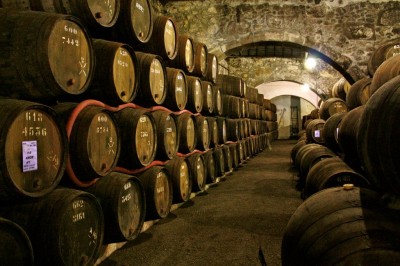
Less fermentation does not mean the final drink has less alcohol than regular wines. In fact, the added brandy has a very high alcoholic content, giving Port wine 19 – 22 degrees of alcohol.
Only five grape varieties are used generally in making Port: Tinta Barroca, Tinta Cao, Tinta Roriz, Touriga Francesa, and Touriga Nacional; for white Port (not so well known) wine makers use white grapes exclusively: Donzelinho Branco, Esgana-Cao, Folgasao, Malvasia Fina, and Viosinho.
The area where Port is made and vines grown has a microclimate that presents the ideal weather –mild temperatures all year round—and ideal soil conditions. The land is full of slopes that have been into terraces that make mechanization very difficult, which means most of the work has to be done by hand, increasing the cost of producing and price for buying port.
The vineyards can be found on both sides of the Douro, and although traditionally Port had to be made in Vila Nova de Gaia (on the south bank of the Douro), nowadays it is allowed to age in barrels in other villages of the province.
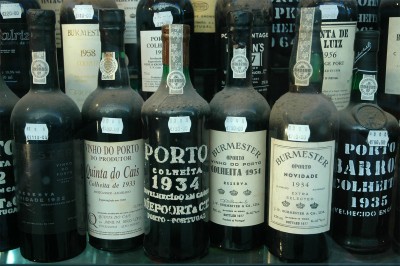
The creation of wine in Portugal goes back as far as the eleventh century and has improved over the centuries.
It was not until the English fought a war with the French in the Eighteenth Century that Portuguese wines (and so Port) increased in prominence and trade. The English, eager for good wine but not being able to obtain it from France, purchased it from its Portuguese allies. Later on, the English acquired some wineries near Oporto to make wines according to their own particular tastes. This fact explains why most of language relating to Port is in English and why Englishmen still consider Port to be a British tradition.
Editor note: One could say the same for tea, coming from China yet being considered a British tradition.









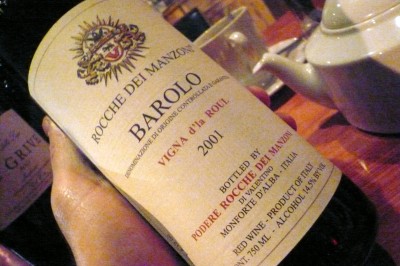



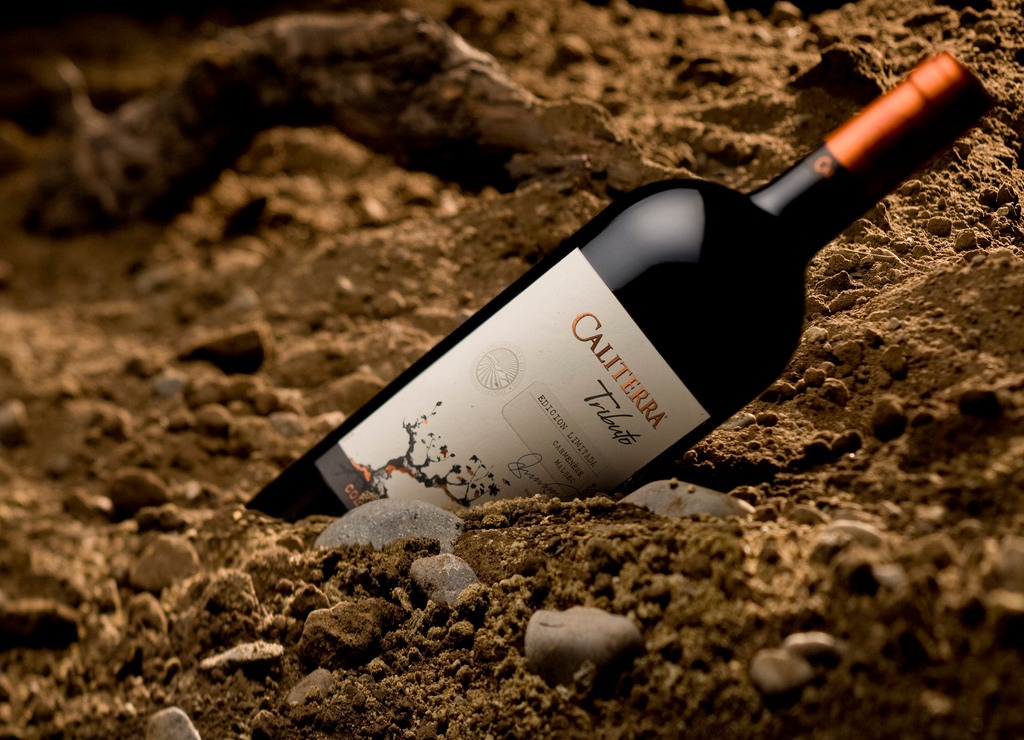



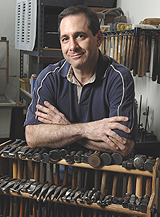

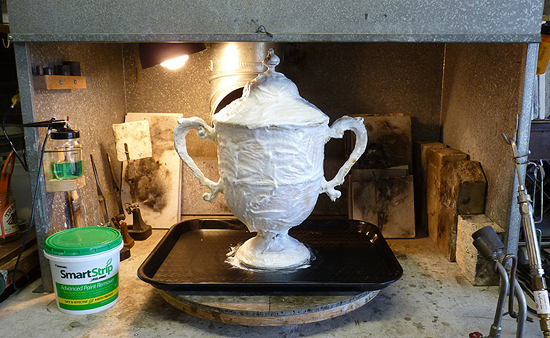
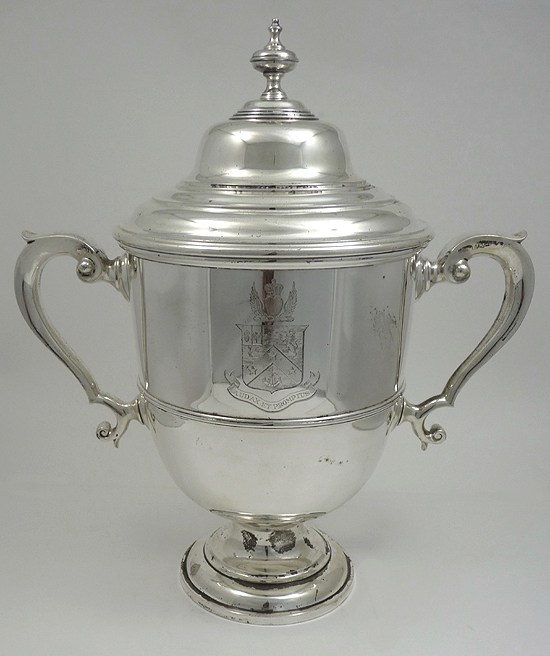
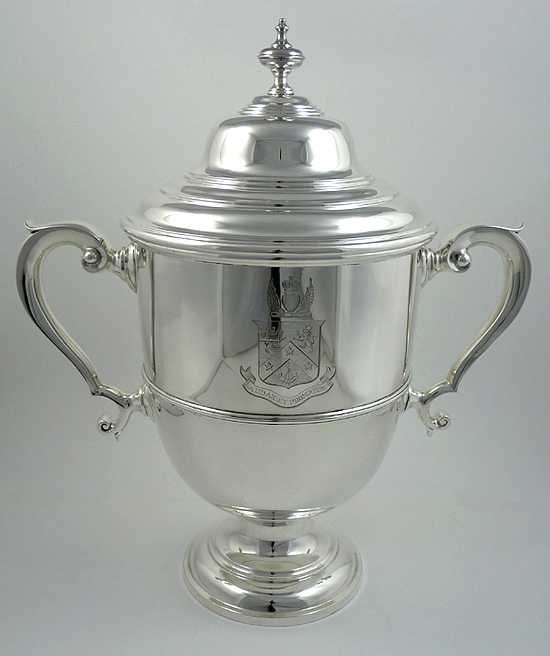
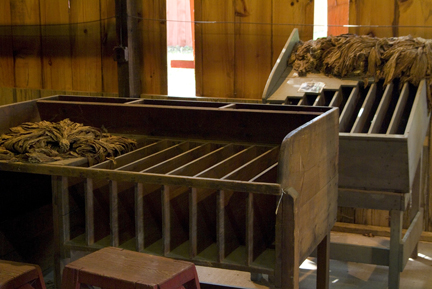

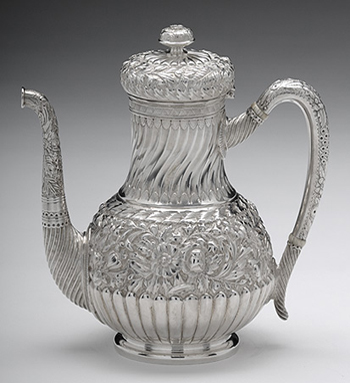
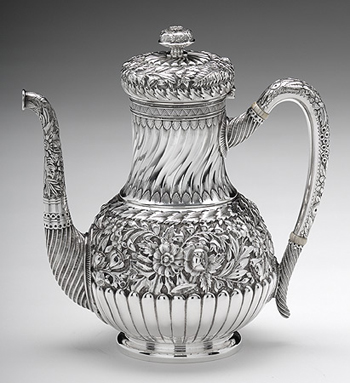














 such as handles. If tarnish does build up, remove it as soon as possible for two reasons: (1) it is much easier to remove tarnish in its early stages of formation; and (2) your silver will show less wear, as it will be exposed to less abrasion. Most of us are familiar with that light brown – and eventually black – color that forms on silver as it tarnishes. To catch tarnish in its very early stages, hold the silver object against a piece of white paper (glossy paper preferred). If tarnish has started to form, you will see a very light yellowish tint in the silver. Try removing this light tarnish with either Windex Multi-Surface Vinegar or Purell Original Formula hand sanitizer. Use a cotton towel or cotton ball and rotate the material regularly to expose unused surfaces – elements in the tarnish itself can be very abrasive. If tarnish remains after using the above products, a silver polish will be required (see my
such as handles. If tarnish does build up, remove it as soon as possible for two reasons: (1) it is much easier to remove tarnish in its early stages of formation; and (2) your silver will show less wear, as it will be exposed to less abrasion. Most of us are familiar with that light brown – and eventually black – color that forms on silver as it tarnishes. To catch tarnish in its very early stages, hold the silver object against a piece of white paper (glossy paper preferred). If tarnish has started to form, you will see a very light yellowish tint in the silver. Try removing this light tarnish with either Windex Multi-Surface Vinegar or Purell Original Formula hand sanitizer. Use a cotton towel or cotton ball and rotate the material regularly to expose unused surfaces – elements in the tarnish itself can be very abrasive. If tarnish remains after using the above products, a silver polish will be required (see my  As part of a multi-month roll-out of improved butlerservice aboard the Norwegian Cruise lines thatis designed to set a new standard for butler service in the cruise line industry, enthusiastic butler trainers from several vessels completed their Train the Trainerscourse in December and will be heading back to their vessels to institute the next phase of the program.
As part of a multi-month roll-out of improved butlerservice aboard the Norwegian Cruise lines thatis designed to set a new standard for butler service in the cruise line industry, enthusiastic butler trainers from several vessels completed their Train the Trainerscourse in December and will be heading back to their vessels to institute the next phase of the program.